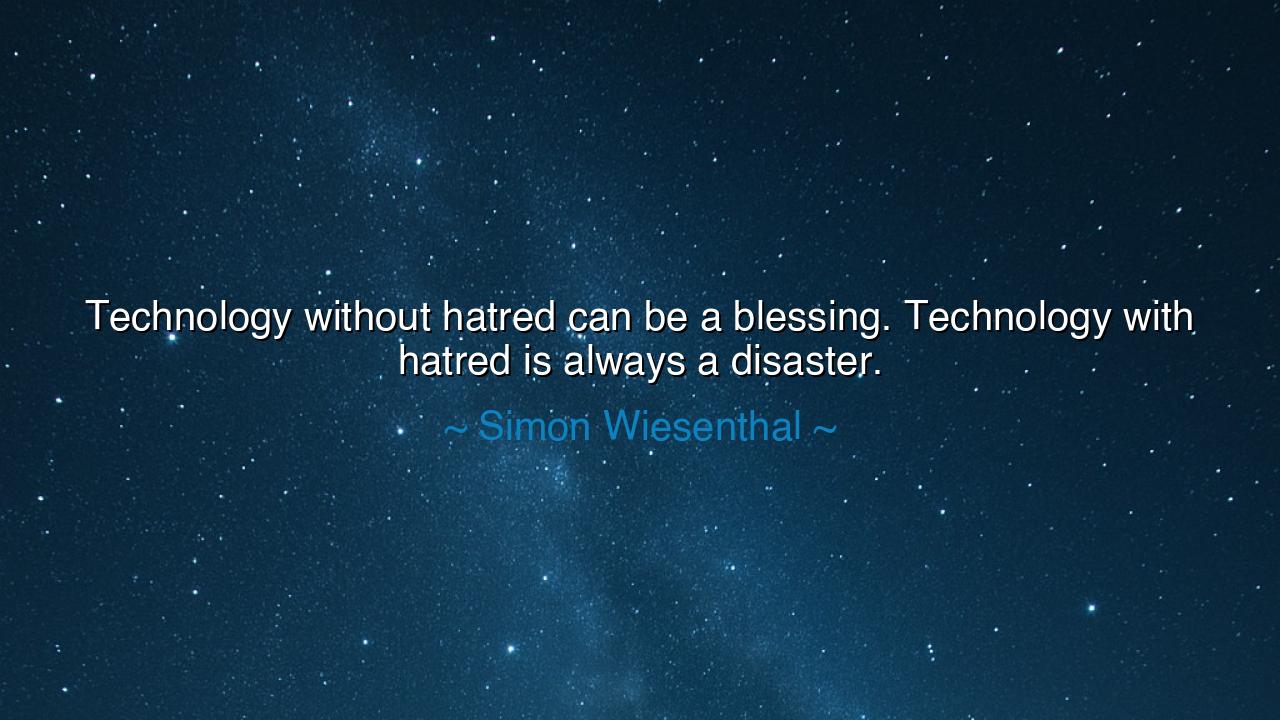
Technology without hatred can be a blessing. Technology with
Technology without hatred can be a blessing. Technology with hatred is always a disaster.






Hear the solemn wisdom of Simon Wiesenthal, a man who survived the fires of the Holocaust and dedicated his life to seeking justice against those who wrought destruction. He declared: “Technology without hatred can be a blessing. Technology with hatred is always a disaster.” These words come not from idle reflection, but from one who witnessed the extremes of both human ingenuity and human cruelty. They echo through the ages as a warning: the tools we fashion are not themselves good or evil, but their purpose is determined by the spirit in which they are used.
At its best, technology is a servant of life. It heals the sick through medicine, bridges oceans with communication, and carries us to the stars. When guided by compassion and wisdom, it becomes a blessing, extending human potential and easing suffering. But when poisoned by hatred, the same tools become engines of destruction. Wiesenthal, who saw trains designed to carry men not to cities but to death camps, who saw gas chambers built with engineering precision to annihilate innocents, knew this truth with his own eyes: technology with hatred is the swiftest path to disaster.
History resounds with examples of this dual nature. Consider the atom. In one hand, it brought forth nuclear power, capable of lighting entire cities with the energy of the stars. In another hand, driven by fear and hostility, it birthed the mushroom cloud over Hiroshima and Nagasaki, bringing death and ashes. The atom itself was neutral; it was the presence or absence of hatred that decided whether it became a light of hope or a shadow of terror.
Even in ancient times this principle was seen. The Romans, masters of engineering, built roads, aqueducts, and cities that carried civilization forward. Yet, when ambition hardened into hatred, those same roads carried armies bent on conquest, and those same technologies fed the engines of oppression. The lesson is eternal: a tool does not choose its destiny; it reflects the soul of the one who wields it.
From Wiesenthal’s own life, the teaching is sharpened. After the war, he could have allowed hatred to consume him, using his sharp mind and connections to strike at those who had wronged him personally. But instead, he used his skills as a hunter of justice, gathering evidence, seeking trials, and ensuring that truth would not vanish into silence. His life reminds us that even in the aftermath of unimaginable suffering, technology—be it law, writing, or memory—can be harnessed without hatred, and thus serve as a blessing to generations.
The lesson for all who hear these words is simple but demanding: never separate the tool from the spirit that guides it. If you are to wield technology, let it be with compassion, with justice, with love for humanity. Before you speak, before you build, before you create—search your heart. Ask: “Do I carry hatred, or do I carry mercy?” For only in the absence of hatred can our inventions bring life instead of death.
Therefore, O seeker of wisdom, let your actions be guided by this truth: use technology as a bridge, not as a weapon. Heal with it, do not wound. Connect with it, do not divide. Create with it, do not destroy. For the future of humankind rests not in the brilliance of our machines, but in the spirit with which we wield them.
Take these words as a commandment for the ages: technology without hatred is a blessing, technology with hatred is disaster. Let not the fire in your hands consume, but rather illuminate. Pass this teaching to your children, and to theirs, so that they may walk in light, and not in the shadow of destruction.






AAdministratorAdministrator
Welcome, honored guests. Please leave a comment, we will respond soon